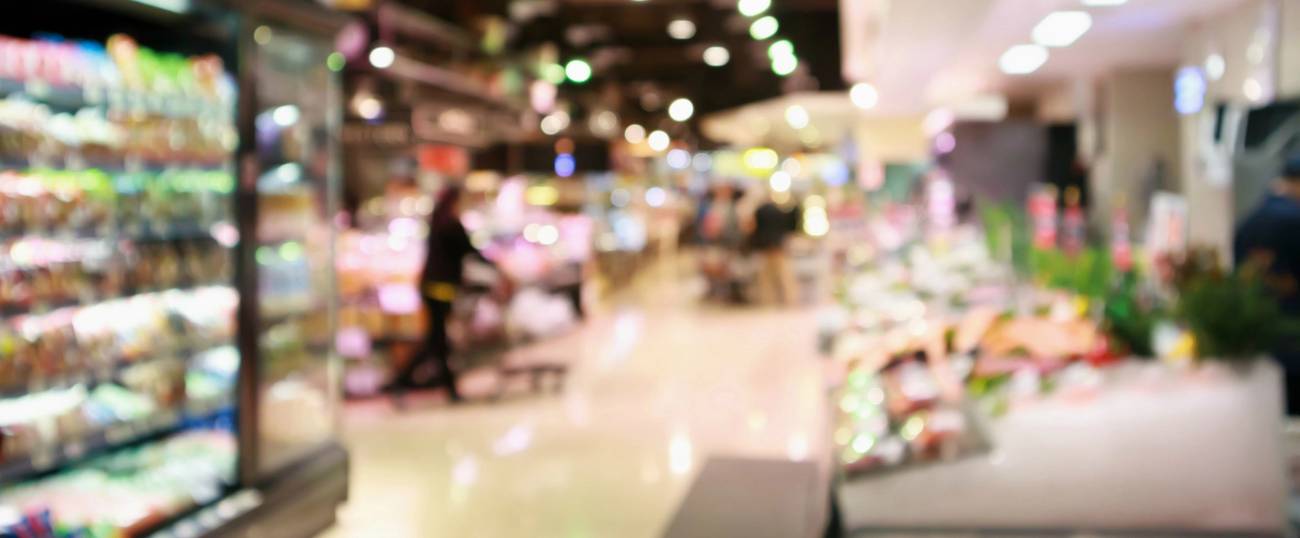Keeping Kosher on Food Stamps
‘We certainly cannot support everybody that really needs help’




It’s Thursday morning in Borough Park, Brooklyn, and Rachel, a 37 year-old Hasidic mother of nine, is preparing for Shabbat. Amid the sounds of chopping and her toddler daughter’s coughs, she explains that she’s been on food stamps for over a decade.
For a single-income family of their size, “food is a big expense,” she says, estimating that she spends $200-300 a week on groceries. Although food stamps “help a lot,” Rachel says she has to budget carefully to make it to the end of each month.
“We just think, Do we need this? Do we need that?” said Rachel, who asked that her real name not be used. “I can’t say that we only can spend this amount per week, but it’s more than we just try not to overdo things, get things that we don’t need.”
Many of New York’s poorest Jews live in Borough Park, a predominantly Hasidic neighborhood that has experienced a “dramatic population increase” since 2002, according to a United Jewish Federation Special Report. Hasidim remain the second largest Jewish group in poverty in New York, and more rely on food stamps, now known as the Supplemental Nutrition Assistance Program (SNAP), than any other public benefit. But for Hasidic families, food stamps often aren’t enough to cover the added cost of a kosher diet.
“[If an item] is two or three dollars, it’s probably double that when it’s kosher,” explained Rabbi Joel Pitkowsky, board secretary for MAZON: A Jewish Response to Hunger. “Doubling three dollars doesn’t seem like a lot of money, because the total is only six dollars, but for someone who’s food insecure, that could be the difference between two or three meals a day.”
Kosher meat and other sources of protein are particularly expensive, costing “roughly three times the amount of what you would spend regularly,” said Rebecca Glass, manager of City Harvest’s Kosher Initiative. Yet kosher vegetables can be pricey, too, as a mashgiach must oversee the washing process and ensure that no insects are present.
“Most of the vegetables, like cucumbers, peppers, tomatoes, we could get [non-kosher] and just wash ourselves,” Rachel explained, citing a common workaround for the so-called ‘kosher premium.’ “It’s the ones that are hard to check that we look for kosher certification, like romaine lettuce, or let’s say, broccoli, or cabbage.”
But for the average Hasidic family, even these additions to the grocery bill can be substantial. Most Orthodox Jews have at least four children by age 60, according to the Pew Research Center, and along with synagogue dues, yeshiva tuition, and specialized clothing, the kosher premium contributes to their rising cost of living.
Judaism’s ritual relationship to food, however, makes the Orthodox diet a particularly expensive aspect of observance. “The holiday and weekly Shabbat celebrations, you don’t just want to have a meal; you want to have a nice meal,” said Glass. Indeed, for many Hasidic households, “every Shabbos is bigger than Thanksgiving,” explained Alexander Rappaport, founder of Masbia, a network of kosher soup kitchens.
Yet as a result of the kosher premium, “[food stamps] don’t stretch nearly as far for a kosher household as they do for a non-kosher household,” said Jessica Hughson-Andrade, director of Benefits Access at the Metropolitan Council on Jewish Poverty. The average kosher household can afford 19 fewer meals per month with SNAP benefits, and “they’re looking at maybe half of the month… where they’re really scraping by.”
Such pervasive food insecurity is an open secret among the Hasidim, and the community’s solutions depend on its insularity. At local grocery stores, many Orthodox families rely on an informal credit system known as “oifschreiben,” or Yiddish for “put it on my bill.” Although it helps keep food on the table, it’s a quick fix that often drives households further into debt. It’s also tough on smaller grocers, such as the Borough Park shopkeeper who said that collecting on customers’ tabs was giving him “a second bleeding ulcer.”
“When a child comes in… that’s when I’m soft,” he said, referring to the children sent to pick up groceries for their parents. “But the items don’t grow in my basement.”
Over a decade ago, Williamsburg native Rabbi Shamson Krausz started a nonprofit to prevent such struggling families from being turned away at the register. By soliciting $5 donations from wealthier shoppers at grocery stores throughout Brooklyn, Eizer Lamuzen provides anonymous debt relief for Hasidic households caught in the oifschreiben system.
Though Eizer Lamuzen’s efforts are laudable, “we certainly cannot support everybody that really needs help,” Krausz explained. The more than two dozen kosher food pantries and soup kitchens in New York City alone are a testament to the scale of Jewish poverty and to the limitations of SNAP, which sometimes lasts Hasidic families for as little as a week, Krausz said.
Yet “the best thing for helping the poor is still the SNAP program,” according to Alexander Rapaport. As executive director of Masbia, a series of kosher soup kitchens in Brooklyn, he serves people “on the fringes,” locals who have run out of food stamps or never enrolled. Those who take meals at Masbia are “the people who fall out of the system, who are somewhat in no-man’s land,” Rapaport said.
By contrast, clients receiving groceries from Masbia’s kosher pantry are more likely to be part of the “stable poor.” “We have lots of single mothers who utilize our pantry packages,” Rapaport explained. “[They] just come quickly, pick up some food, take it home, cook it at home, and the kids never know this is from charity.”
In fact, one of the challenges of addressing Hasidic hunger is the stigma around aid of any kind. “For the typical Hasidic person…it’s very embarrassing, and the experience [at Masbia] is very quick… in and out and run,” Rapaport said. Even enrolling the Orthodox in benefits such as SNAP can be difficult, added Hughson-Andrade, as recipients fear “their neighbor’s going to see them doing this.”
As an administrator of Eizer Lamuzen, Rabbi Shamson Krausz’s refusal to pry is characteristic of the tight-knit community. “Being a Hasidic Jew helping people, I don’t think it’s my duty to go in and find out exactly the lifestyle and what they have and what they don’t have,” Krausz said. “I’m trying to find out if this person is eligible to get help, and if he is, I don’t go anymore further.”
This emphasis on discretion, as well the absence of any data on SNAP recipients’ religious affiliation, has long obscured the extent of Hasidic food insecurity, even among fellow Jews.
“People still find it very hard to believe that… the Jewish community is not all the stereotypical upper middle class, upper class, very secure community,” said Pitkowsky. “That has never been true, and it is certainly not true now.”
On the contrary, with the need for kosher pantries having grown “exponentially” over the last decade, the “double handicap” of being poor and kosher is only becoming more widespread, Pitkowsky said.
Nonetheless, “what I hear from people is that they would rather go hungry than break Jewish dietary law,” Glass added. And for now, Rachel says, “we manage.”
Emma Davis is a former editorial intern at Tablet and has written for NBC News, Today.com, and the Huffington Post Blog.